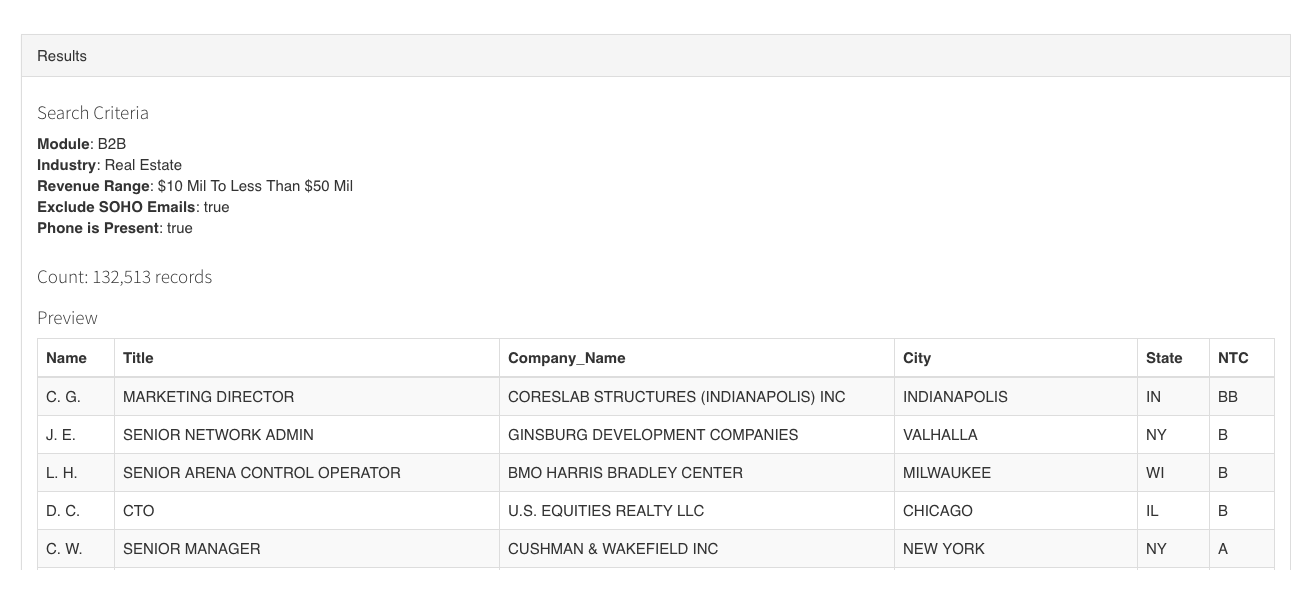
Selling email lists is fraught with difficulty. First, there are the legal implications of CAN-SPAM and more recently, GDPR.
There’s nothing more effective for a sales team than the personal contact information for a lead. Leapfrogging gatekeepers and bypassing social to put value right in front of a real decision maker?
OK, twist my arm. Trouble is, leads know that too. They know if their email and phone number are easily available, they’re going to get every salesperson in the world in their inbox 24/7. The average C suite professional receives 120 or more cold emails daily already. To preserve their time it’s absolutely in their interests to make this stuff hard to find.
It’s still worth investing the time to find these users - here’s how to go about it.
If you have a clear idea of the kinds of contacts you’d like to reach out to, you can do the requisite research yourself. If you’re an SDR, you’re probably familiar with what that entails: hours scrolling through first-point-of-contact sites like LinkedIn, looking for contacts that you can then try to chase down working emails for.
Trouble is, a lot of CXOs aren’t even on LinkedIn, the ‘business’ social channel. If they have a Twitter account it’s usually run for them and very carefully not associated with their actual email address.
![]()
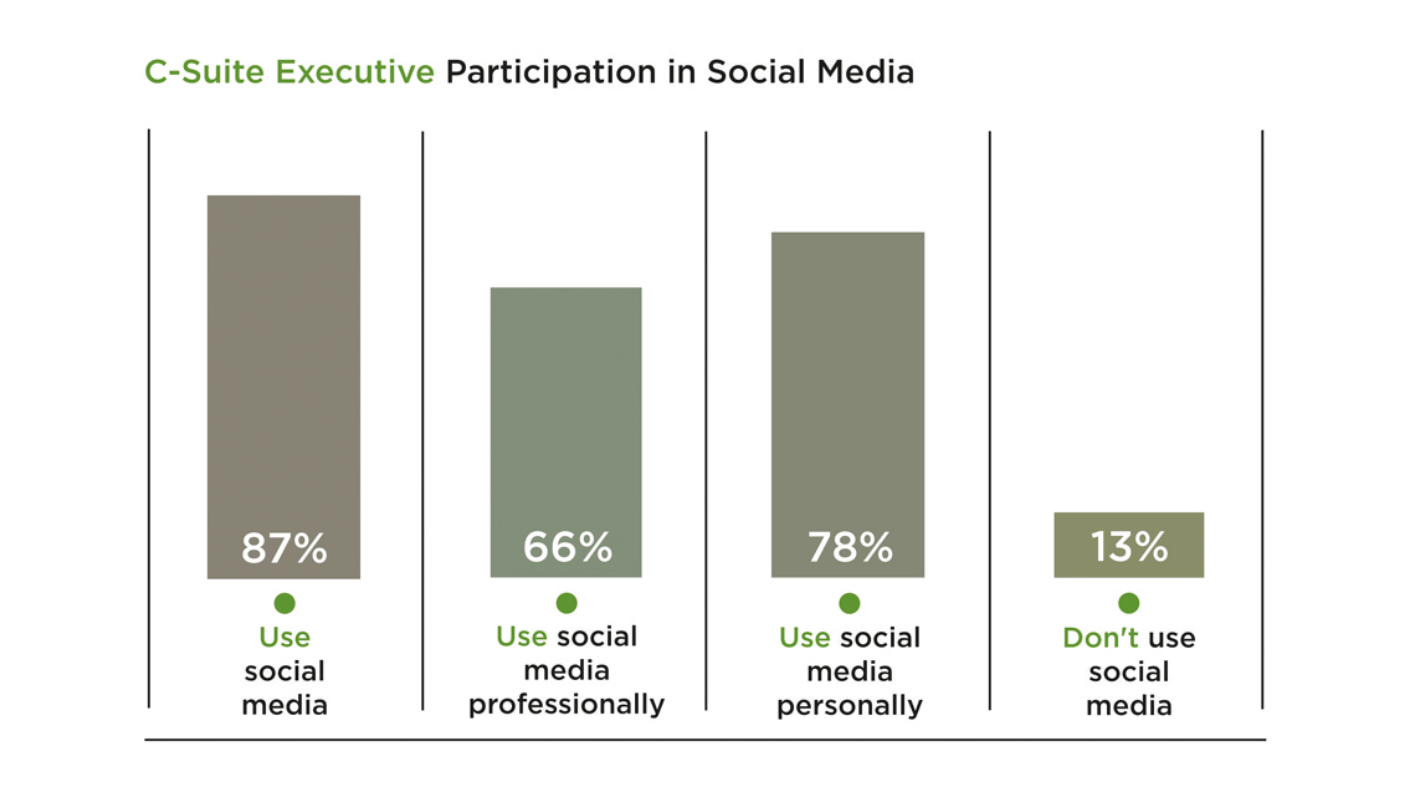
33% of CXOs don’t use social media professionally; 13%, or one in eight, don’t use social media at all.
Obviously, that has profound implications for ABS. When an average 6.8 people are involved in B2B sales decisions, this kind of social prospecting almost guarantees missing at least one vital stakeholder in any deal.
Without a professional social media presence, you can still find a prospect’s email. Most company About pages will give you the names of the C suite, and you’ll have their domain too. Head over to Hunter.io or a similar tool, and you might get lucky:
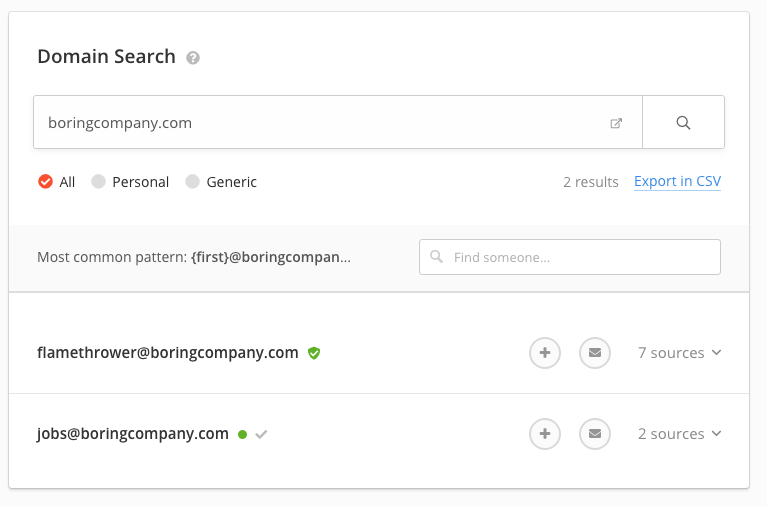
Or you might not. If you don’t find the person you’re looking for that way, or you get an unconfirmed low-confidence email that turns out not to be real, your options are more limited.
You can use tricks like faking a Facebook sign-in to get the length and format of a person’s email and then working it up from there with a mix of trial and error and web searches for public mentions of that address. But I seriously don’t recommend it. It’s very questionable ethically, and probably against the law in some places. Plus, it’s immensely time-consuming - hardly a scalable approach.
Doing your own research can bear fruit - but it’s time-consuming and can be very hit and miss. The more senior the person you’re trying to draw a bead on, the bigger the organization, the less likely this is to give you a usable list.
There are data researchers who will happily take the gig. Many of these are from India, the Philippines and other countries where USD go a bit further than in, say, Oregon. The market is large and sophisticated, featuring one-person freelance VA (Virtual Assistant) outfits, agencies and professional data research firms.
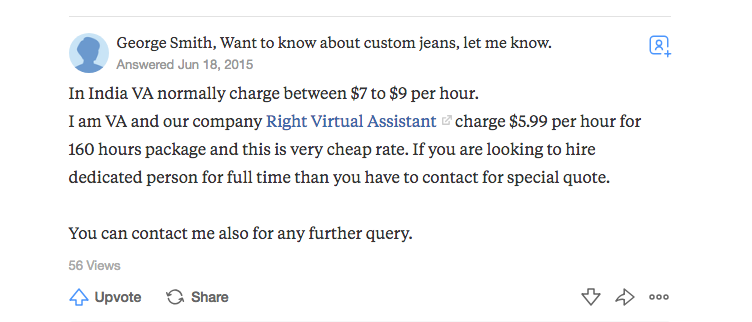
You can hire for all those things in the US and Europe too, of course.
But what kind of result are you going to get?
They’ll either do what’s been outlined above - some of those ideas came straight from organizations like that, spilling the beans on how they get the job done - or they’ll use bought lists and other data sources in addition to their own research. In other words, you’ll never get a better result from a company like that than you could get yourself.
Buying a list can save you from the effort of building one yourself from scratch. And the basic data in bought lists can be of surprisingly high quality. But that’s the exception. The richer it is the more likely it is to contain serious inaccuracies.
The average isn’t good: in a survey for Deloitte, more than two-thirds of respondents said the data about them in bought lists was only 0% to 50% accurate. The remaining third said it was just 0% to 25% accurate. Those huge gaps in accuracy can take your email campaign out before it starts.
You can also find yourself buying a list that has suffered from serious data quality degradation.
Lists degrade rapidly anyway. And in C-level positions, while turnover isn’t as rapid as in some roles, even in the C suite, people are in role between 3.1 and 8 years on average.
The likelihood is, a bought list contains mixed or out-of-date details for decision-makers and lots of gatekeeper contact emails and phone numbers.
Finally: great lists aren’t for sale. Imagine you had one. Would you sell it, or keep it to yourself and work the heck out of it?
Yeah, it’s a plug. But EMMQuery represents the best-in-class when it comes to tools for getting a good list fast.
You need a tool that gives you access to a searchable database of high-quality leads. That is hands-down the fastest and most reliable way to acquire usable email addresses and phone numbers for CXOs. EMMQuery lets you search specifically for C suite emails:

If you know the name of the individual you want, you can enter that. But if you don’t, you can search by industry, including multiple SIC codes; employee number or revenue, to target companies of a certain size; and technologies employed.
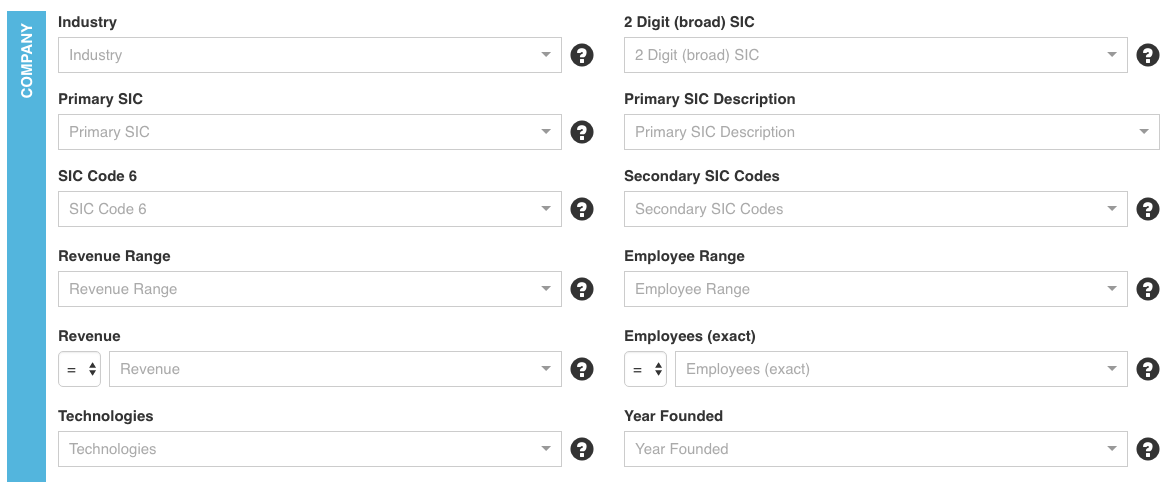
Control for quality by using the NTC dropdown:
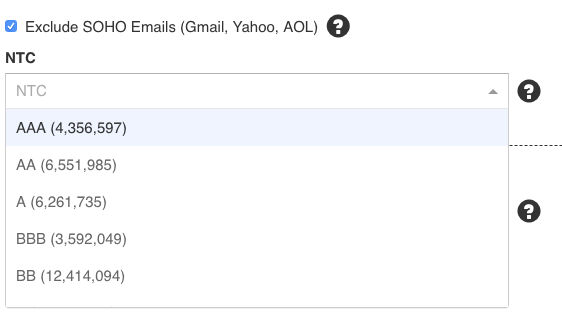
AAA graded reports come with verified email and verified personal telephone numbers, so when you call or email, you know you’re reaching out to the right contact - not a spam-catcher email or company switchboard. Let’s see what we get when we run Elon through EMMQuery:
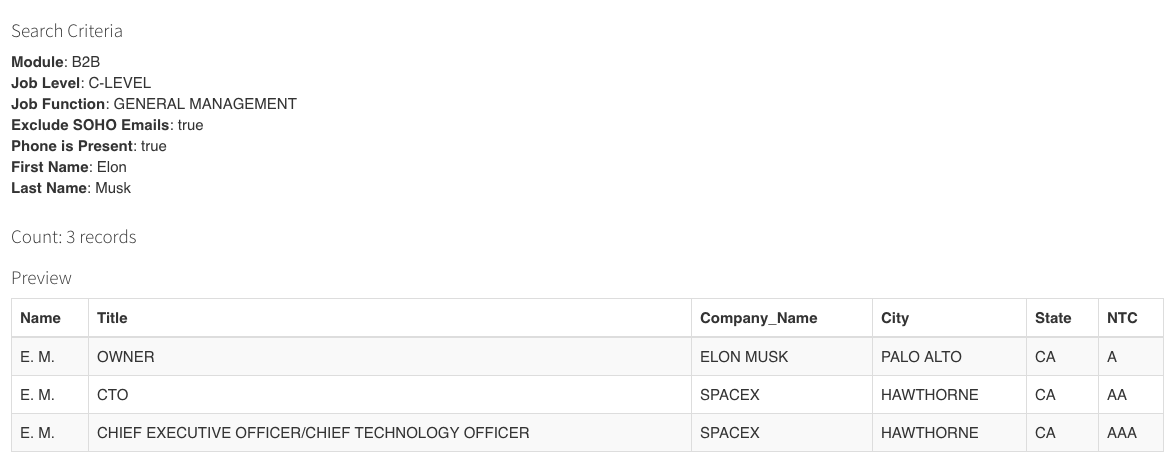
Bingo - found him! (Now all you gotta do is call him…)
When you don’t have a name, but you want a CTO in California, you can search by those criteria:
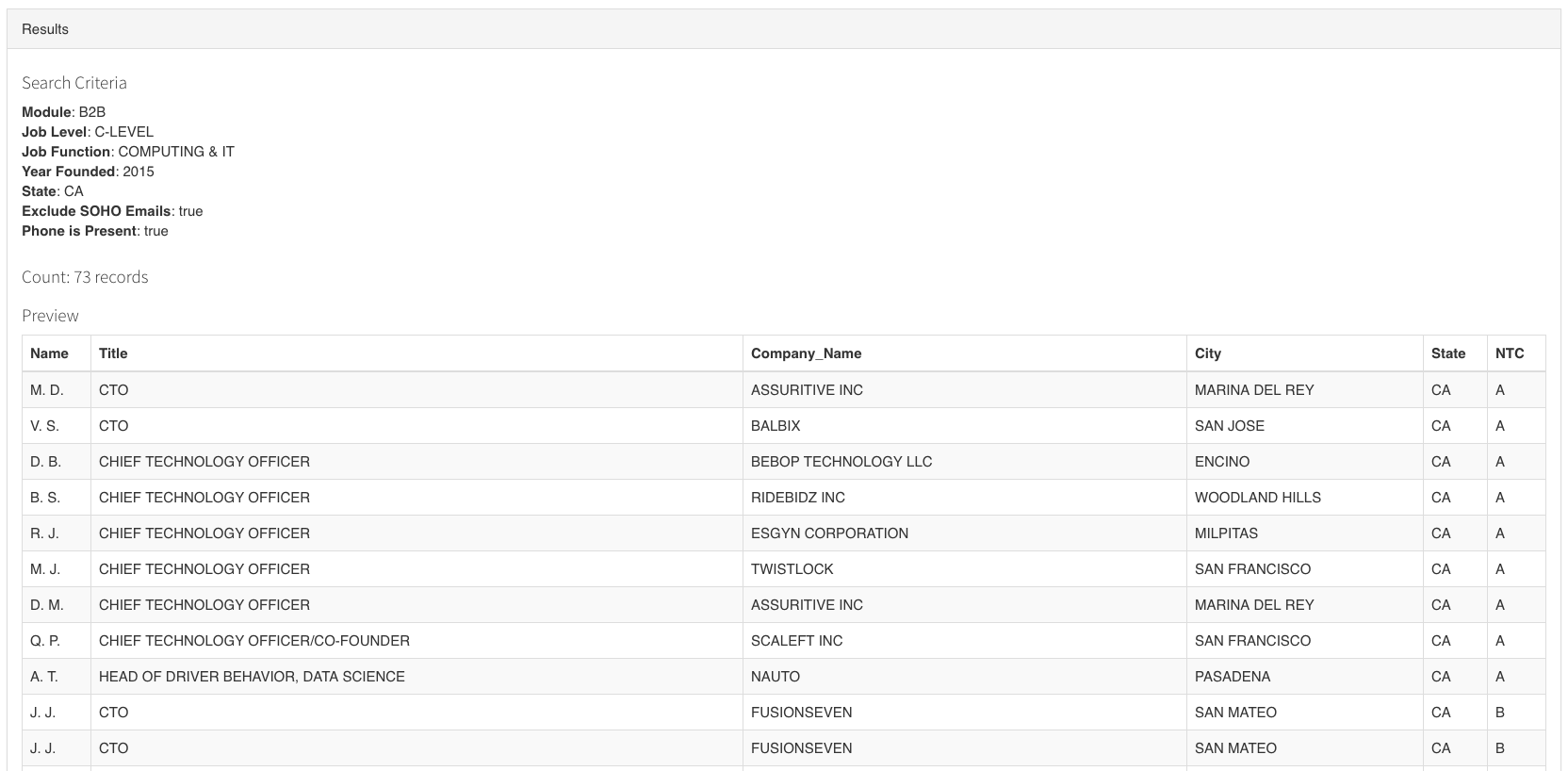
Every record comes with rich data - company name and location, technographics and revenue data, and reliable, verified personal contact information. Now that’s how you find a CXO’s email.
Doing the research yourself is basically like treating the entire web as a database - but an incomplete one that you often don’t have full access to.
The result is a lot of blind alleys, unreliable data and incomplete leads, leading to the kinds of performance we’re used to seeing at the upper end of the sales funnel where only a small minority of leads go on to the next stage.
This sharp drop-off is overwhelmingly caused by poor lead selection and research - tough to avoid when you’re partly working in the dark.
Hiring the work done is just the same, only someone else is doing the legwork. And buying a list often means getting poor quality data that’s incomplete.
So what’s needed is a tool that does the legwork for you - without locking you in the way a bought list does. A searchable database of rich, verified business contacts that you can use to track down CXOs from the right industry, revenue bracket, location and more, and know - for sure - that’s who you’re calling when you pick up the phone.

Selling email lists is fraught with difficulty. First, there are the legal implications of CAN-SPAM and more recently, GDPR.

EMMQuery lets you search a database of over 55 million US executives and over 7 million others around the world. But you’re not limited to a simple search. EMMQuery lets...